25.01.2022
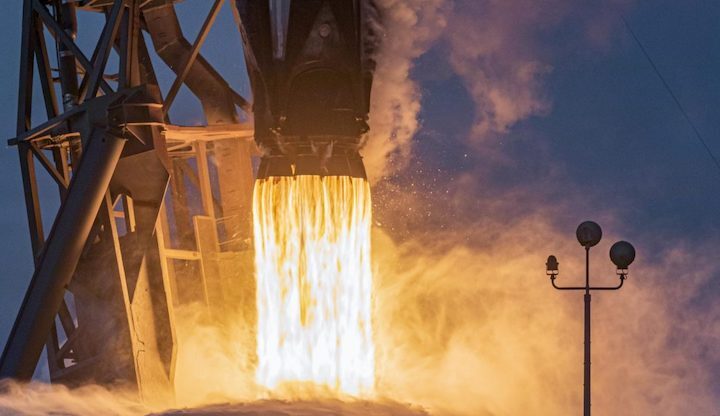
SpaceX has successfully tested a Falcon 9 rocket tasked with launching Italy’s CSG-2 Earth observation satellite as early as 6:11 pm EST (23:11 UTC), Thursday, January 27th.
For any European Space Agency (ESA) member state, launching a spacecraft on a non-European rocket is a rarity. Because the Ariane and Vega rockets that ESA has helped fund and European countries help build are simply no longer capable of consistently competing with SpaceX’s Falcon pricing, Arianespace and ESA have increasingly sought multi-year political mandates that forcemember states to agree to launch all possible payloads on Ariane, Vega, or Soyuz rockets. Only after Vega suffered multiple launch failures and its Vega C upgrade ran into multiple delays was Italy apparently able to consider launch alternatives for CSG-2 instead of delaying its already-delayed launch by another year or more.
Designed to monitor Earth’s surface towards a variety of ends with a technology known as scanning aperture radar (SAR), the roughly 2200-kilogram (~4900 lb) satellite is headed to a circular polar orbit 620 kilometers (385 mi) above the planet’s surface. Designed to launch on the primarily Italian-built Vega C rocket, which is itself designed to launch up to 2300 kg to low Earth orbit, CSG-2 will instead launch on SpaceX’s much larger Falcon 9.
As of a few years ago, a Falcon 9 launch with a flight-proven booster carried a base price of approximately $50M for at least 12 tons (~27,000 lb) to LEO. According to manufacturer Avio, Vega C is designed to launch 2.3 tons (~5100 lb) to LEO for about $40M. Given that SpaceX recently charged NASA $50M to launch the agency’s IXPE X-ray observatory with a drone ship landing for the mission’s Falcon 9 booster, it’s plausible that Italy is paying SpaceX less than $50M to launch CSG-2, which is light enough and headed to a simple enough orbit to allow its Falcon 9 booster to return to land for recovery.
According to CEO Elon Musk, the complexity of a drone ship landing and at-sea booster recovery adds significant cost (perhaps up to several hundred thousand dollars) to any Falcon launch that requires it. As such, Falcon 9’s return-to-launch-site (RTLS) landing could singlehandedly shave ~$500,000 from CSG-2’s launch price, making it even more cost-competitive with Vega.
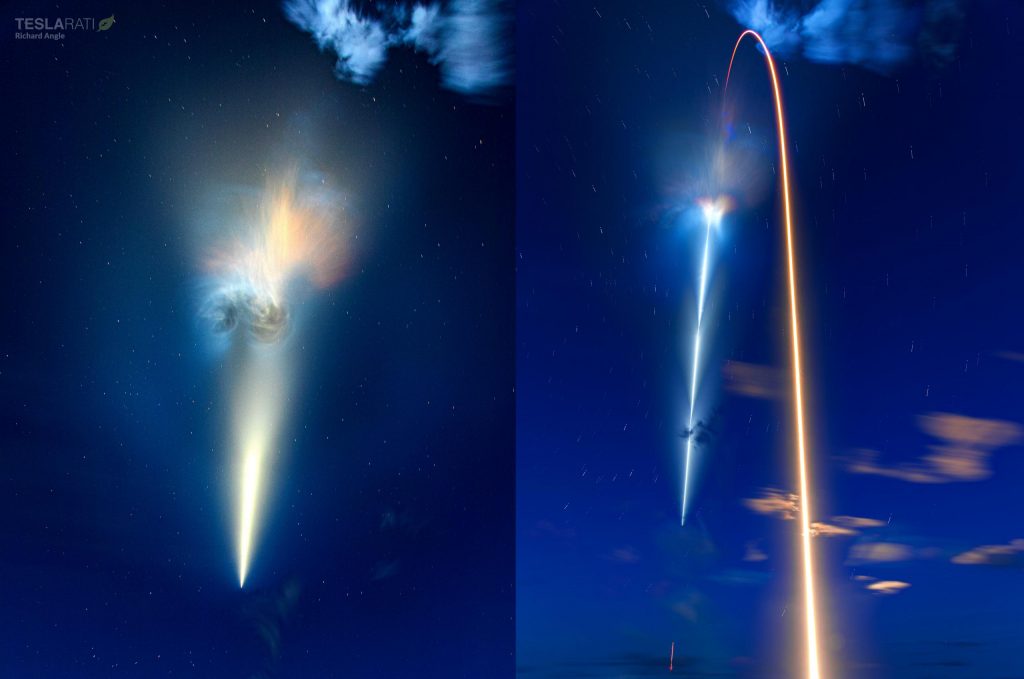
Thanks to the launch window SpaceX and ASI have settled on, CSG-2’s launch could be quite spectacular – and for more than just the crowd-favorite Falcon 9 RTLS landing it will include. Set to lift off just 15 minutes after sunset, the twilight sky (clouds permitting) will be dark blue as Falcon 9 lifts off and climbs into sunlight, backlighting the miles-long exhaust plumes of both stages.
The mission’s RTLS landing will only enhance the effect by adding the interaction of the exhaust plumes of both stages as CSG-2’s Falcon 9 booster flips around and boosts back towards the Florida coast. The sun may even backlight the booster’s exhaust during a reentry burn performed a few minutes after stage separation, hopefully resulting in a spectacular light show that lasts several minutes and is visible for hundreds of miles in any direction.
CSG-2 is the first of three SpaceX launches scheduled in six days. The company aims to launch CSG-2 at 6:11 pm EST on January 27th, Starlink 4-7 around 6:15 pm EST on January 29th, and NROL-87 as early as the morning of February 2nd. If all three avoid delays, NROL-87 will be SpaceX’s sixth launch in 27 days, making it the second time SpaceX has launched three times in one week and six times in four weeks.
Space Force: Weather good for SpaceX launch of Italian satellite from Cape Canaveral
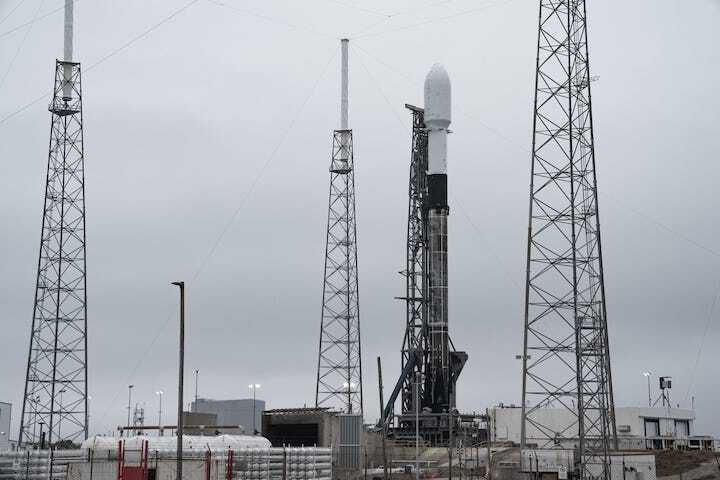
Update: The weather forecast has deteriorated slightly for this mission, which is now 60% "go."
---
Space Force forecasters are expecting favorable conditions for the Thursday launch of a SpaceX Falcon 9 rocket, this time flying with an Earth observation satellite.
Conditions at Cape Canaveral Space Force Station's Launch Complex 40 should be 70% "go" for liftoff at 6:06 p.m. EST, the opening of an 11-minute window. Space Launch Delta 45 forecasters said a system bringing cloudy conditions to the Space Coast will leave the area early Thursday.
"But the onshore flow will still support a few low-topped showers moving towards the coast," the local forecasters said. "Thus, the main weather concerns for launch day are lingering cumulus clouds and showers embedded in this low-level onshore flow."
Additional factors not calculated into the "percent go" criteria like lading zone recovery weather, upper-level winds, and solar flare activity were all categorized as "low risk." If the mission delays to Friday, however, the percent go drops to 60% and upper-level winds deteriorate to "moderate risk."
Secured in the 230-foot Falcon 9 rocket's payload fairing will be COSMO-SkyMed 2, an Italian Space Agency Earth observation satellite that will primarily use radar to scan the Earth's surface for both civilian and military purposes. It's also referred to as CSG-2.
Like all of SpaceX's previous launches this month, Falcon 9 will take off and pivot toward the south and deliver CSG-2 to a polar orbit some 385 miles above Earth. A landing at Cape Canaveral's Landing Zone 1 is expected along the way.
Two more launches are on the books for this month, though it remains to be seen if they will stick to schedule. The debut of a small rocket by startup company Astra is currently set for no earlier than Friday, Jan. 28, but could shift to early February; and SpaceX's next batch of Starlink satellites is scheduled to launch from Kennedy Space Center no earlier than 3 p.m. on Saturday, Jan. 29.
Rocket launch on Thursday, Jan. 27
- Rocket: SpaceX Falcon 9
- Mission: COSMO-SkyMed Earth observation satellite
- Launch Time: 6:06 p.m. EST
- Launch Window: To 6:17 p.m. EST
- Trajectory: Southeast
- Landing: Landing Zone 1
- Weather: 80% "go"
Quelle: Florida Today
+++
It's Launch Day! SpaceX set to launch Italian observation satellite on Falcon 9 tonight
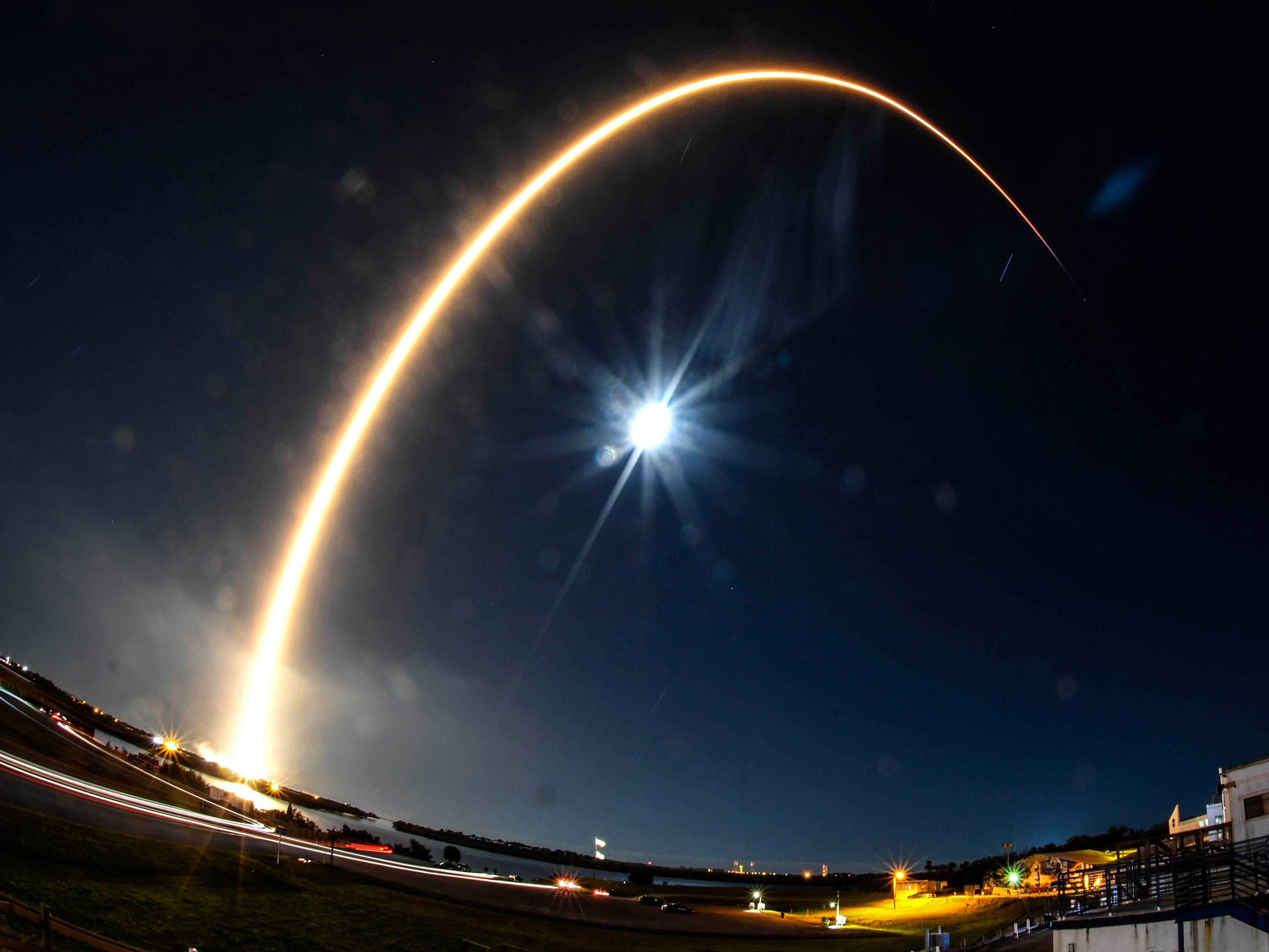
It's Launch Day!
Here's what you need to know for this evening's SpaceX Falcon 9 launch from Cape Canaveral Space Force Station:
• Liftoff is set for 6:11 p.m. The window will remain open for 11 minutes - or until 6:22 p.m.
• Weather forecast is 60% "go" at Launch Complex 40.
Weather update: SpaceX targeting second booster landing at Cape Canaveral, but weather downgraded
Launch schedule: From NASA to SpaceX, these are the top Florida launches to look forward to in 2022
• For the second time this year, SpaceX will attempt to land the Falcon 9's second stage booster at Cape Canaveral's Landing Zone 1.
• The Falcon 9 rocket will carry COSMO-SkyMed 2, an Italian Space Agency Earth observation satellite that will primarily use radar to scan the Earth's surface for both civilian and military purposes.
• The mission will fly toward the southeast to deploy the satellite to a polar orbit.
Quelle: Florida Today
----
Update: 28.01.2022
.
Weather forces SpaceX to scrub launch and landing at Cape Canaveral; next attempt set
Rocket launch on Friday, Jan. 28
- Rocket: SpaceX Falcon 9
- Mission: COSMO-SkyMed Earth observation satellite
- Launch Time: 6:11 p.m. EST
- Launch Window: To 6:17 p.m. EST
- Trajectory: Southeast
- Landing: Landing Zone 1
- Weather: 60% "go"
Quelle: Florida Today
+++
Sonic boom warning: SpaceX’s booster landing could end with a bang heard across Central Florida
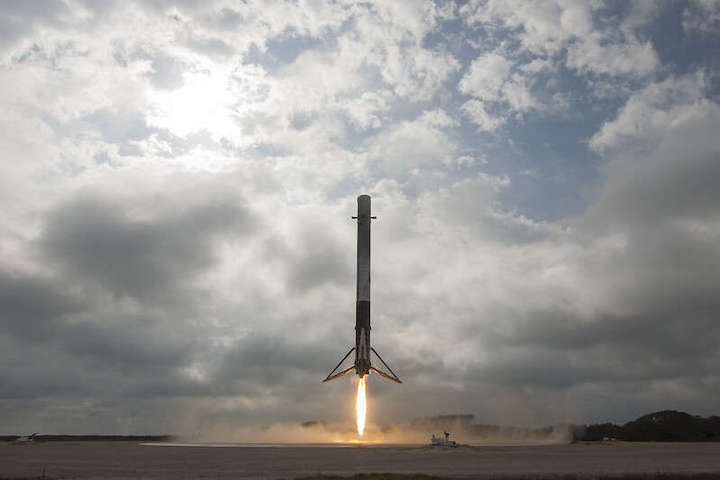
In this file photo, SpaceX lands the first stage of a Falcon 9 booster at LZ-1, located on Cape Canaveral. Photo: SpaceX
A planned SpaceX launch Thursday evening could bring sonic booms to the region.
SpaceX is launching a surveillance satellite for the Italian Space Agency on its Falcon 9 rocket from Cape Canaveral Space Force Station.
Less than 10 minutes after launch, SpaceX plans to land the first stage booster back at Cape Canaveral. It’s return will cause loud sonic booms that could be heard across Central Florida.
Forecasters at Space Force’s Space Launch Delta 45 predict a 60 percent chance of favorable weather and moderate weather risk for booster recovery. The mission’s launch window opens at 6:11 p.m. ET.
SpaceX routinely lands the first stage boosters for reuse, although most of the past landings have been on a barge at sea.
The launch of the Italian satellite is heading on a southward trajectory. The U.S. Space Force is urging boaters and pilots to carefully monitor restricted zones ahead of the launch attempt.
Another Falcon 9 launch is scheduled on Saturday afternoon, launching SpaceX’s Starlink satellites which will join a growing constellation of broadband satellites blanketing the globe. Launch weather is favorable but Space Force forecasters call for high weather risk for booster recovery.
Quelle: WMFE90,7
----
Update: 30.01.2022
.
SpaceX delays Cape Canaveral launch and landing a third time due to weather
SpaceX delayed the launch of a Falcon 9 rocket from Cape Canaveral Space Force Station a third time Saturday, citing the same reason as before – inclement weather – for the push.
"Due to weather in Florida affecting pre-launch operations, now targeting Sunday, January 30, at 6:11 p.m. EST for launch of COSMO-SkyMed Second Generation FM2," the company said Saturday afternoon via Twitter.
Two previous attempts on Thursday and Friday had to be scrubbed due to precipitation and thick clouds hovering over Launch Complex 40. Additional constraints like booster recovery and upper-level winds were concerns, too.
Sunday's attempt, however, looks much better: the Space Force said conditions should be nearly 100% "go" for liftoff of the 230-foot rocket.
"Windy conditions today will rapidly diminish this evening, then remain light tomorrow into Monday," Space Launch Delta 45 forecasters said Saturday. "With atmospheric moisture unseasonably scarce, few clouds are expected."
About nine minutes after liftoff, the rocket's162-foot first stage will fly back to land at the Cape's Landing Zone 1, generating sonic booms that will be heard across the Space Coast and Central Florida. They are startling but harmless.
COSMO-SkyMed Second Generation, or CSG-2, will launch an Earth observation satellite for the Italian Space Agency that uses radar to gather intelligence on surface activities.
SpaceX also confirmed a 24-hour delay for the mission following CSG-2: teams at Kennedy Space Center's pad 39A have two opportunities – 2:17 p.m. or 5:34 p.m. EST Monday, Jan. 31 – to launch the company's 37th batch of Starlink internet satellites. The opportunities do not represent a window; SpaceX must launch exactly on time during either one of those and not in between.
Weather for the Starlink launch, according to the Space Force, also looks good at 90% "go."
Rocket launch on Sunday, Jan. 30
- Rocket: SpaceX Falcon 9
- Mission: COSMO-SkyMed Earth observation satellite
- Launch Time: 6:11 p.m. EST
- Trajectory: Southeast
- Landing: Landing Zone 1
- Weather: 90% "go"
Quelle: Florida Today
----
Update: 31.01.2022
.
Cruise ship enters launch hazard area, forcing SpaceX to scrub mission a fourth time
A cruise ship veered into the exclusion zone along a Falcon 9 rocket's flightpath Sunday evening, forcing SpaceX to stand down from the mission yet again and prepare for a 24-hour turnaround.
Launch engineers, counting down to a 6:11 p.m. EST liftoff from Cape Canaveral Space Force Station, waited as long as possible for the Coast Guard to resolve the situation but ultimately ran out of time to meet the instantaneous window's deadline. It marked the fourth delay for the mission that was previously scrubbed due to inclement weather around Launch Complex 40.
Teams are now targeting 6:11 p.m. EST Monday, Jan. 31, for the fifth attempt at launching an Italian Space Agency Earth observation satellite. If it cannot fly on time, SpaceX will turn its attention to a Feb. 2 national defense payload at Vandenberg Space Force Base in California before re-focusing on the Cape.
Weather for the Monday attempt, according to the Space Force, is expected to be at least 90% "go."
SpaceX identified the ship only as a "cruise liner" and, as of late Sunday, the Coast Guard had not responded to inquiries. A Port Canaveral spokesperson did say a Coast Guard investigation is underway.
Royal Caribbean's Harmony of the Seas and MSC Cruises' Meraviglia were the two ships with scheduled cruises out of Port Canaveral on Sunday.
Sunday's launch was slated to fly toward the southeast, a corridor that went unused from 1960 to 2020. New technologies have enabled SpaceX to resume north-to-south polar launches from Florida, which fly almost parallel to the coast but also mean pilots and mariners need to be on the lookout for different exclusion zones. Hazard areas, designed to mitigate risks to people in the event of a rocket failure, are issued before every mission.
Earlier this month, Space Launch Delta 45 issued a statement and warned pilots and mariners that there would be upwards of five polar launches in January alone. Sunday's launch marks the fourth.
"The 2022 launch pace is going to be exceptionally busy with up to five polar, and seven total launches, projected for the month of January alone," Space Force Maj. Jonathan Szul said in a statement. "Due to the unique southerly trajectories, there will be a larger potential impact to air and sea traffic along the southeast coast of Florida."
"We ask that all pilots and mariners double-check their Notices to Airmen (NOTAM) and Notices to Mariners (NOTMAR) to ensure they are fully aware of all pending launch activities in this historic month on the Space Coast," Szul said.
Sunday's scrub also pushed a SpaceX mission originally slated for Monday: yet another Falcon 9 rocket at Kennedy Space Center's pad 39A will have to wait a little longer for its task of launching the company's 37th batch of Starlink internet satellites. Liftoff was set for 2:17 p.m. EST, but will push back by about 21 minutes for each day it's delayed.
Quelle: Florida Today
----
Update: 1.02.2022
.
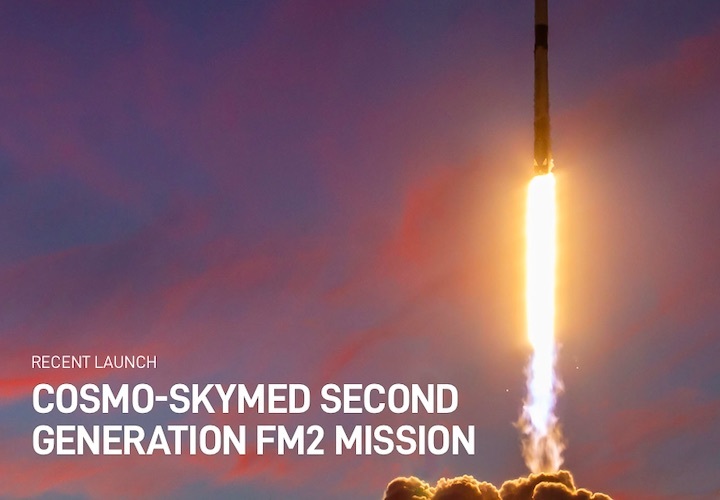
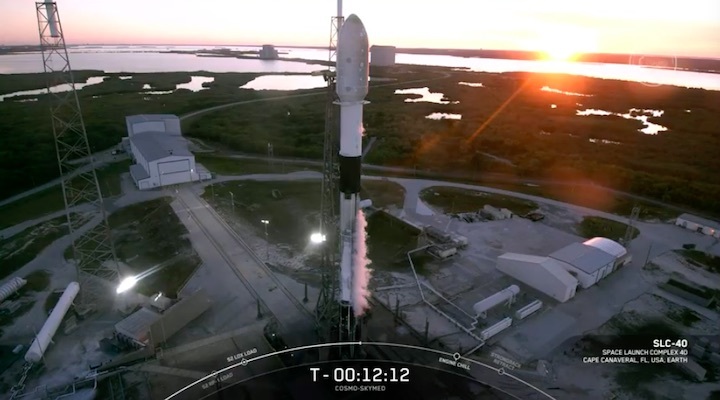
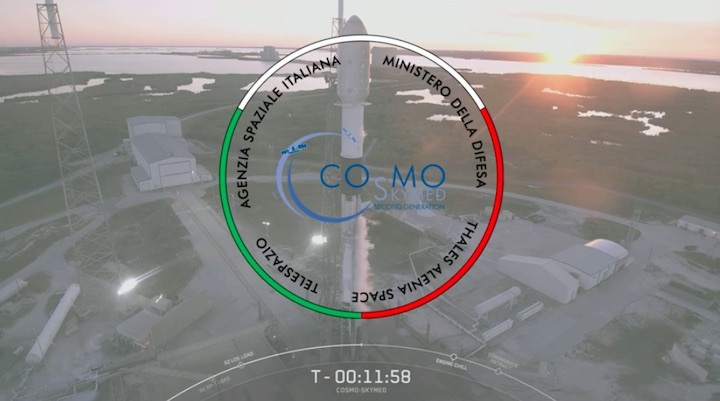
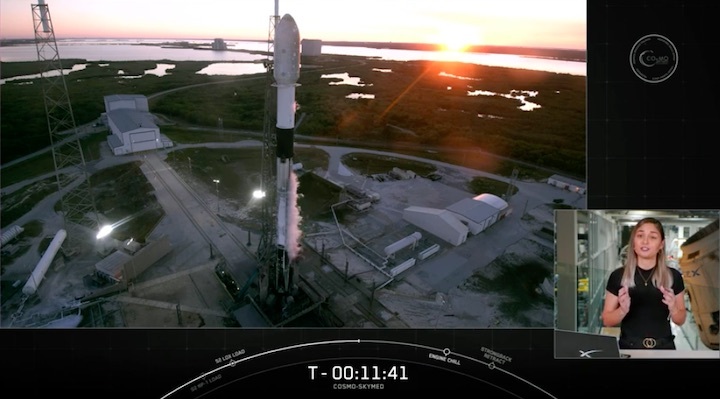
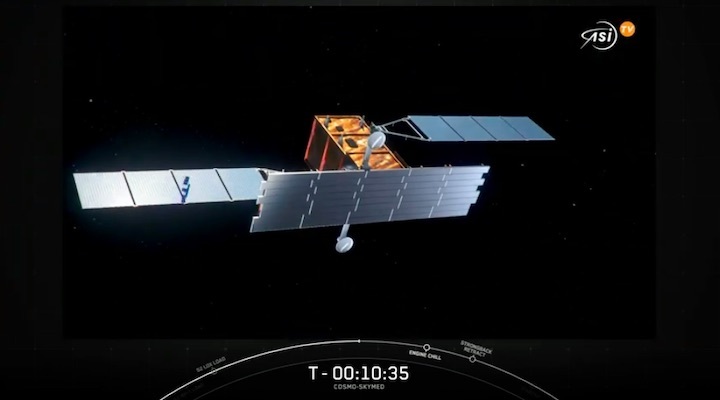
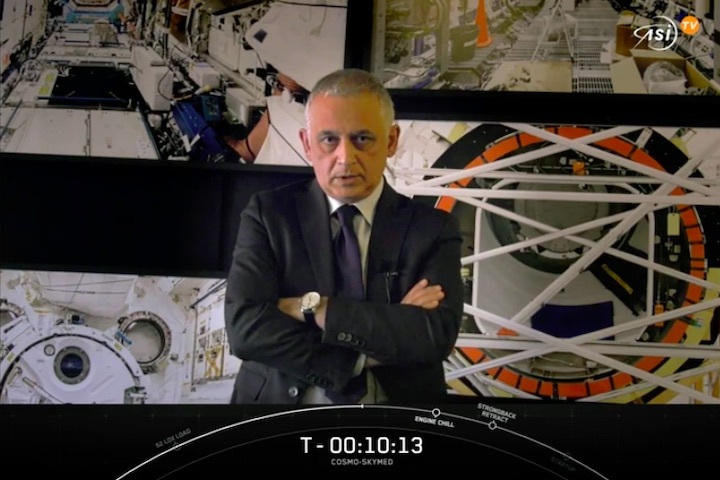
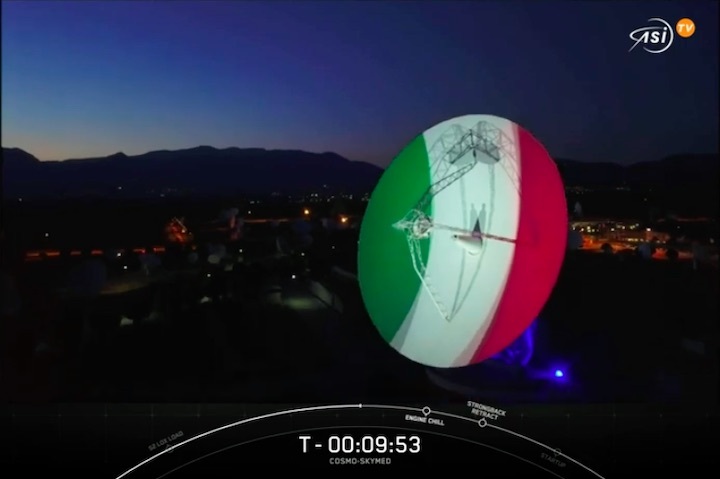
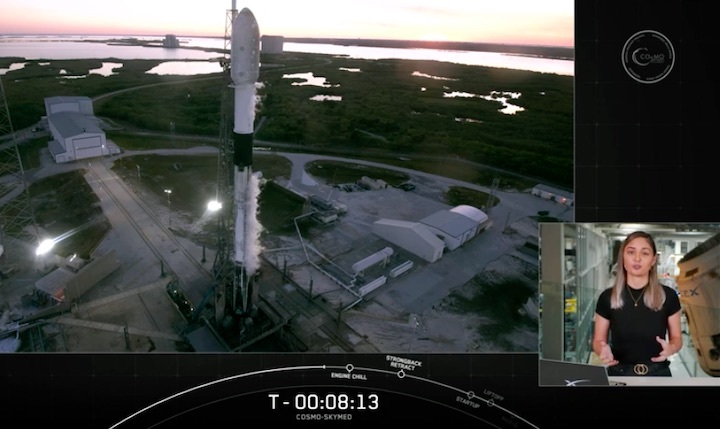
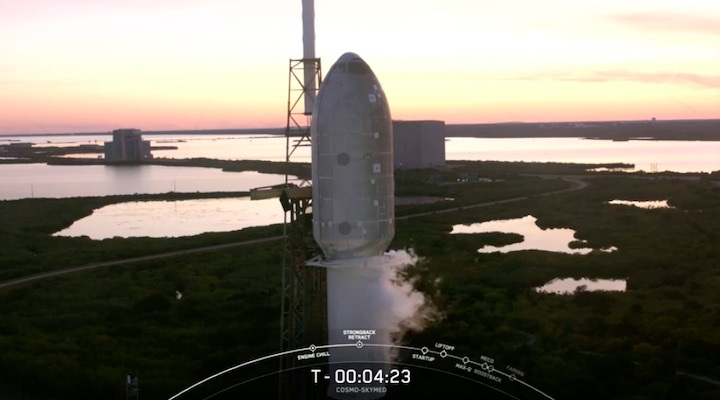
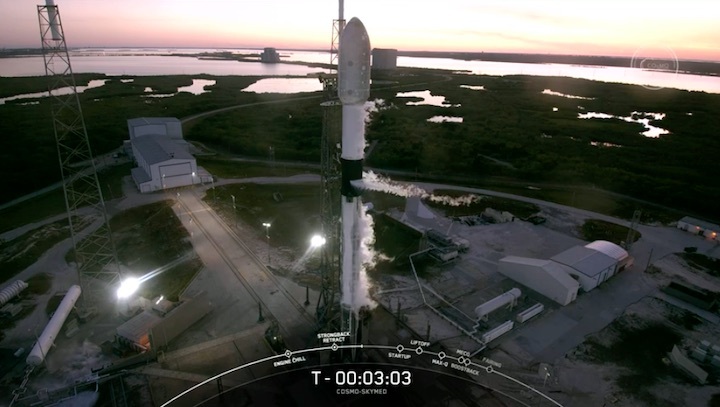
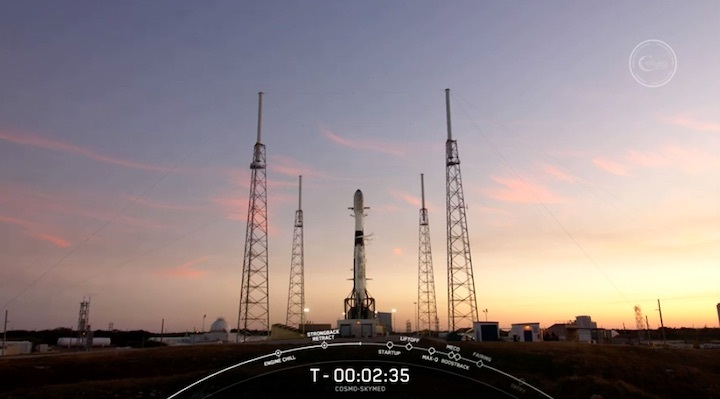
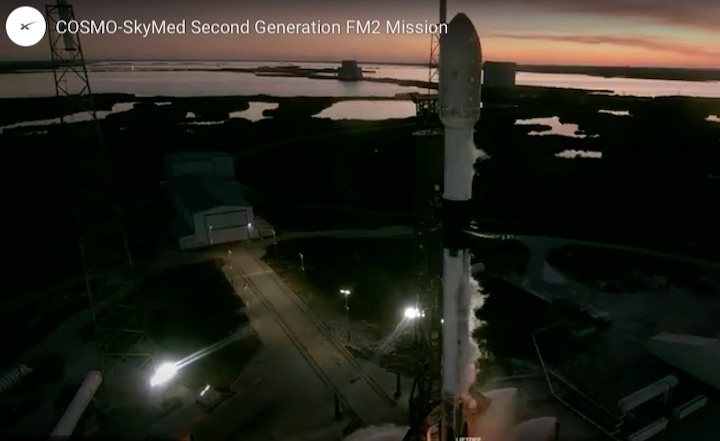
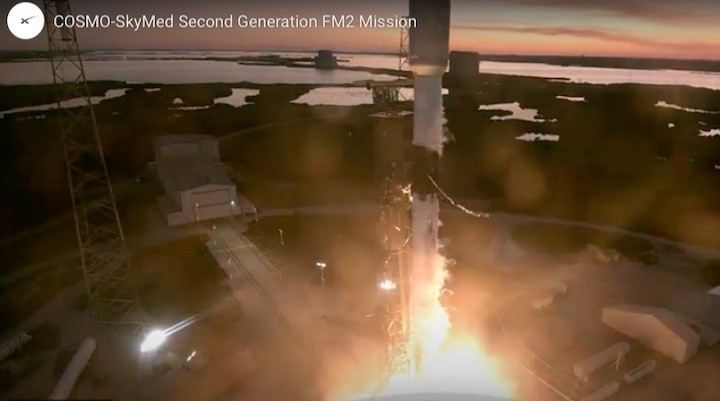
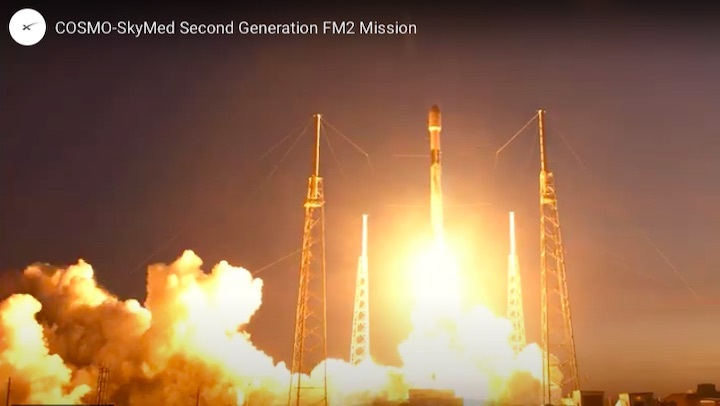
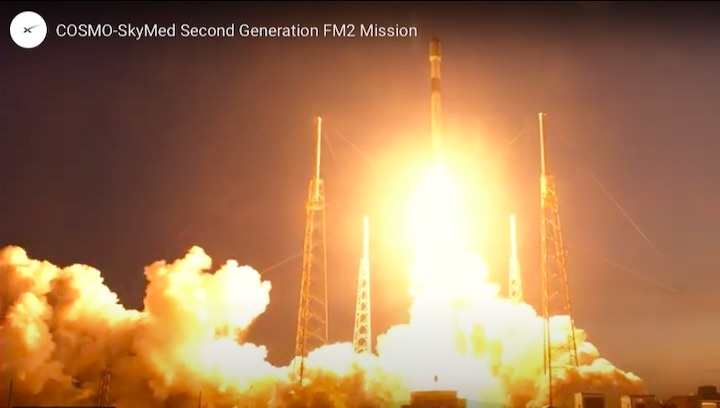
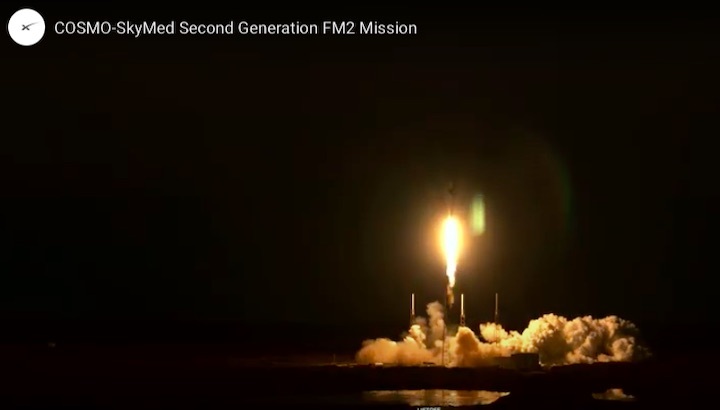
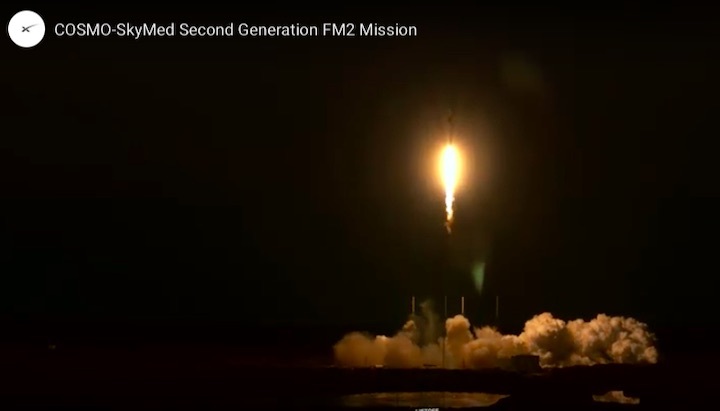
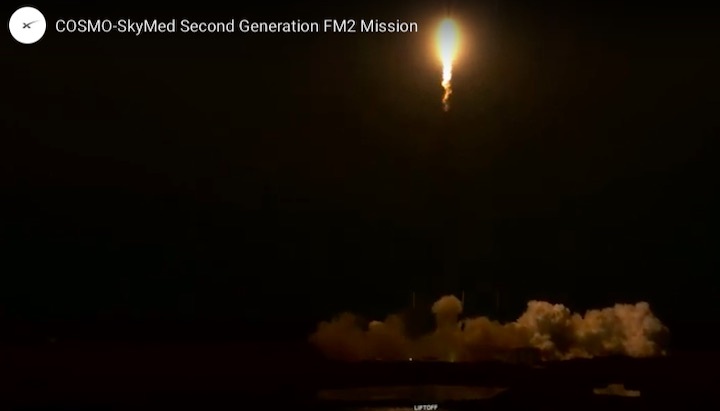
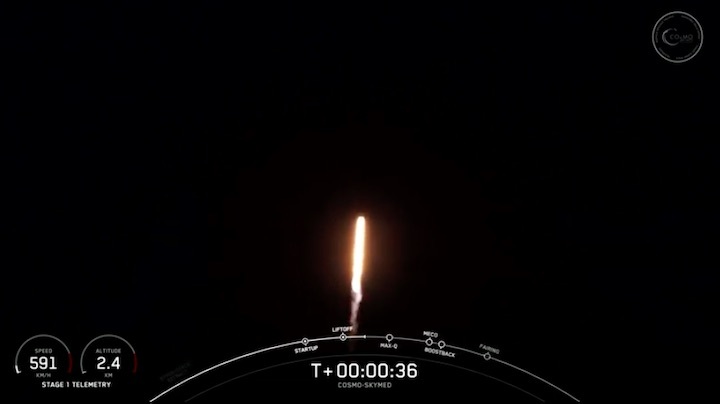
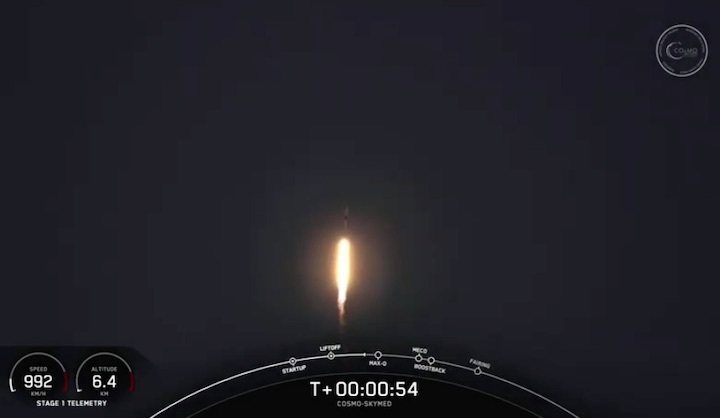
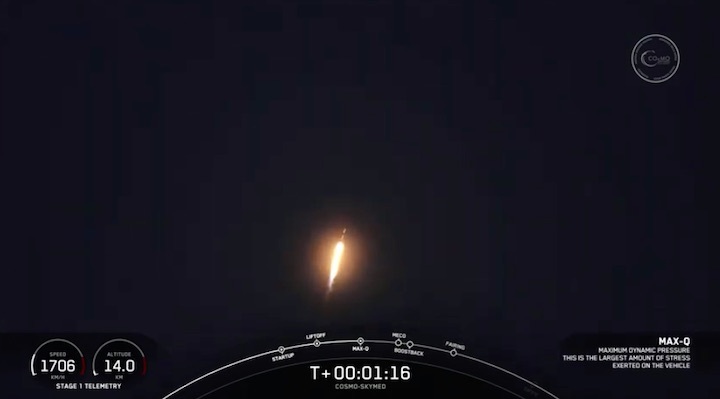
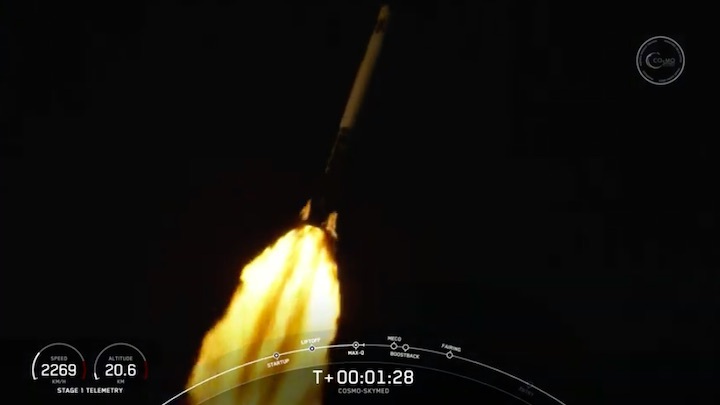
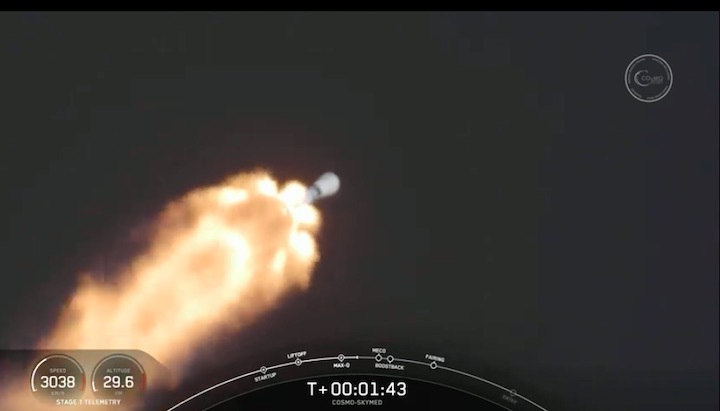
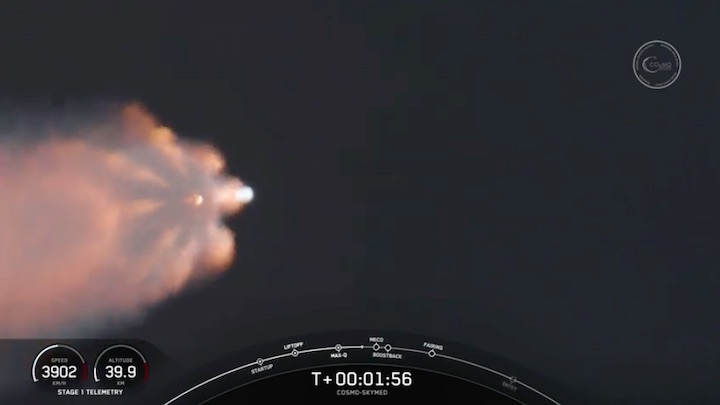
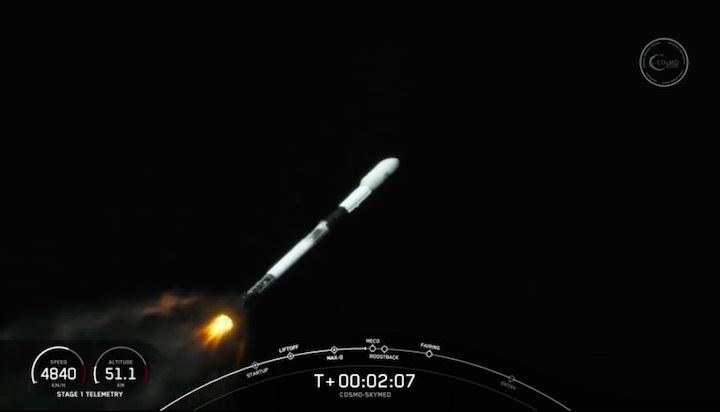
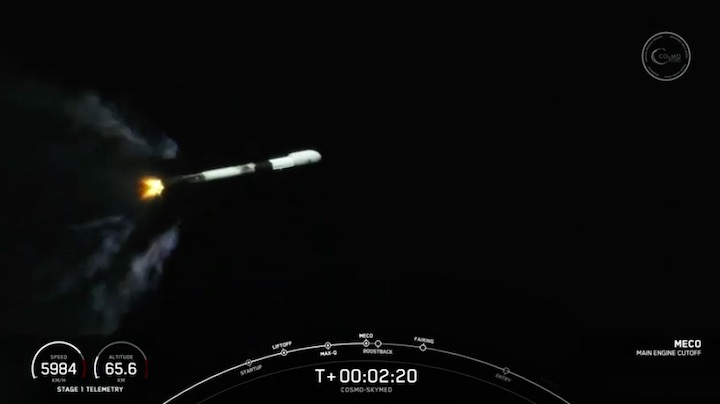
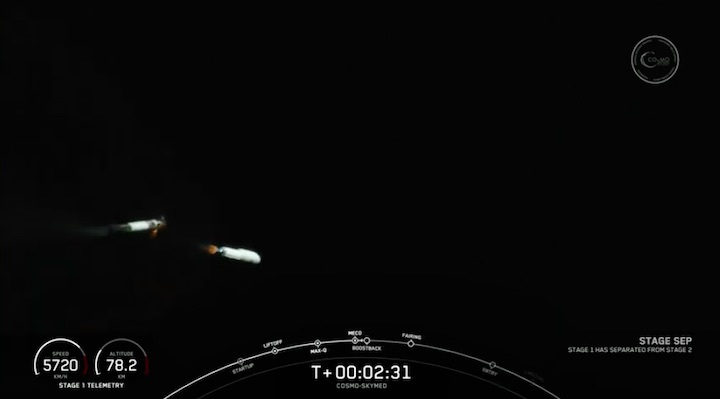
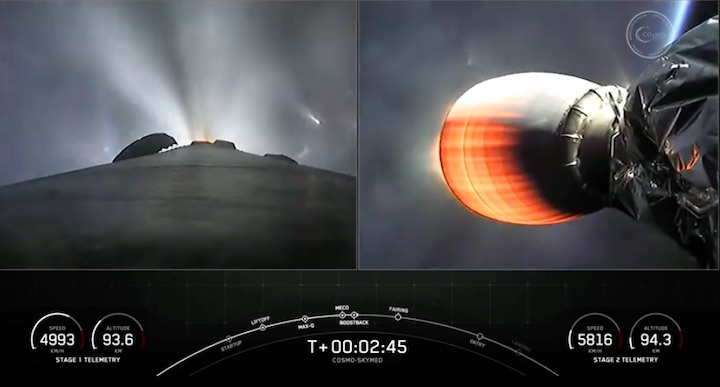
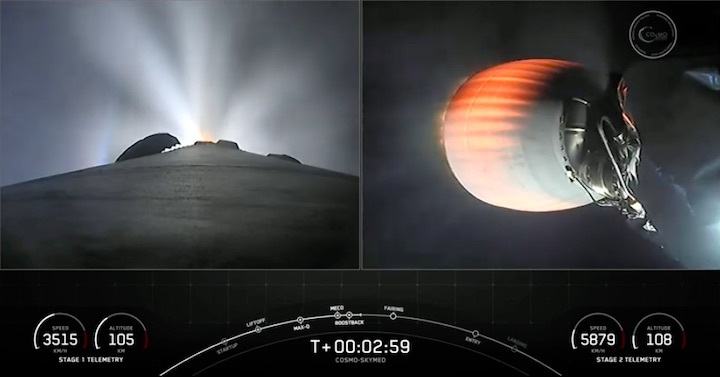
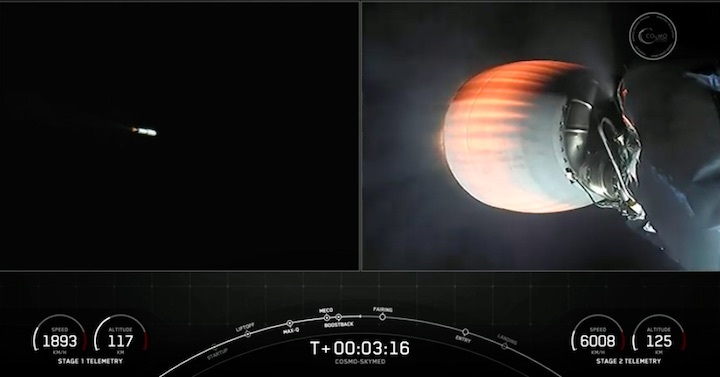
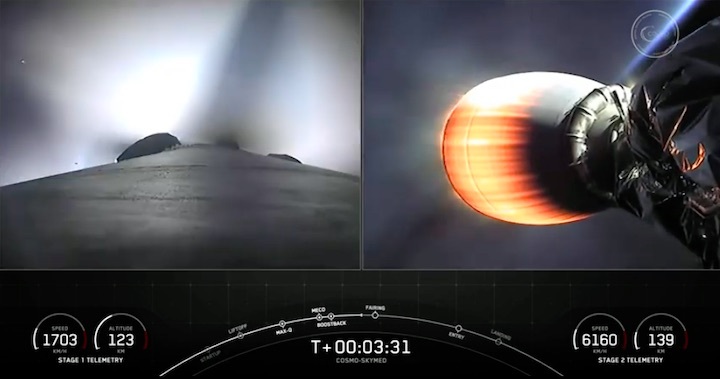
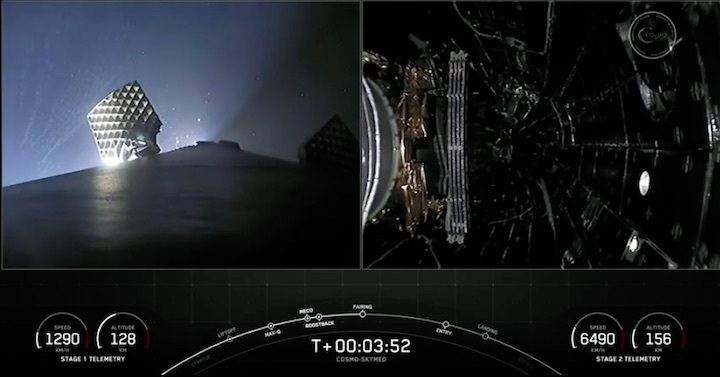
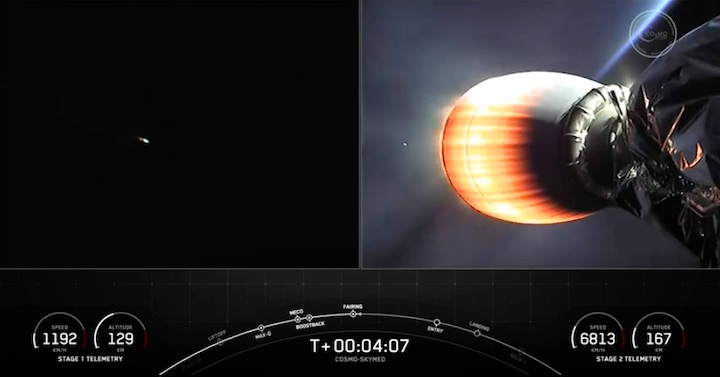
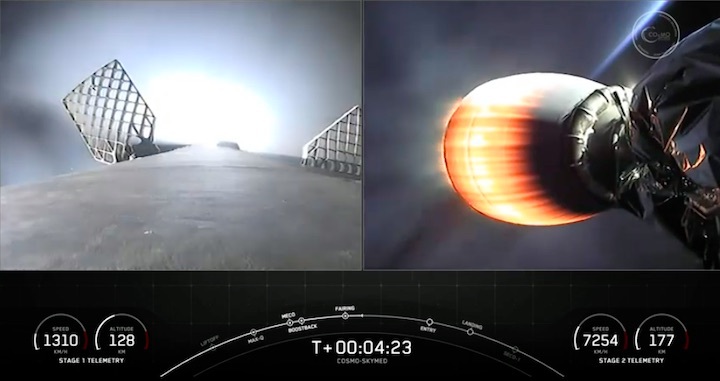
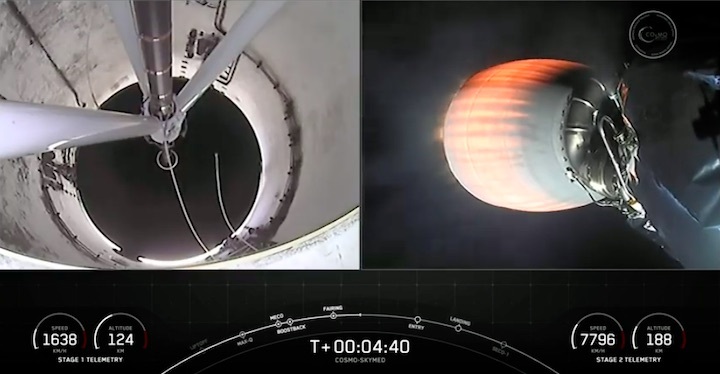
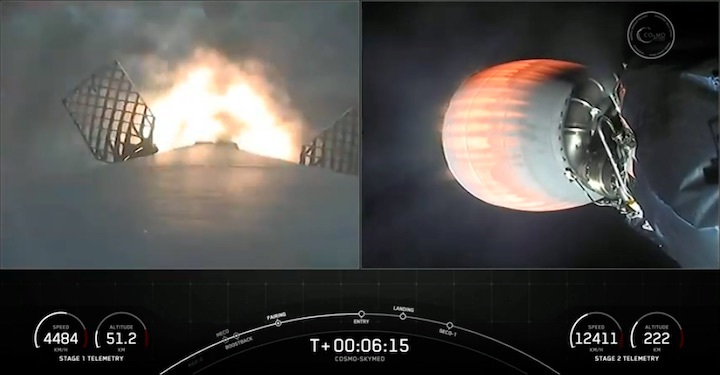
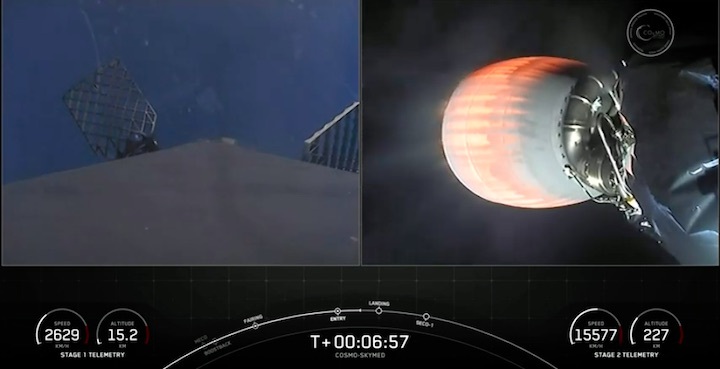
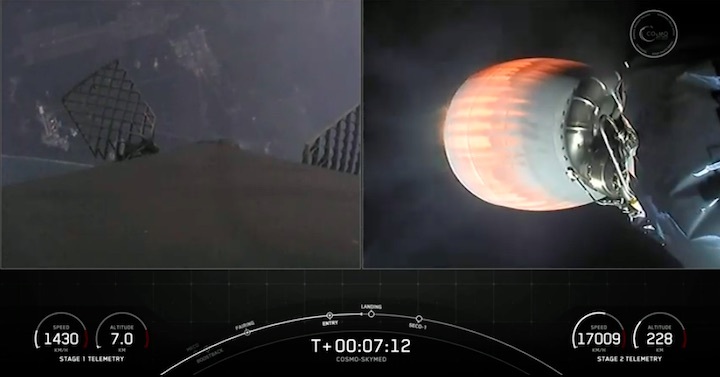
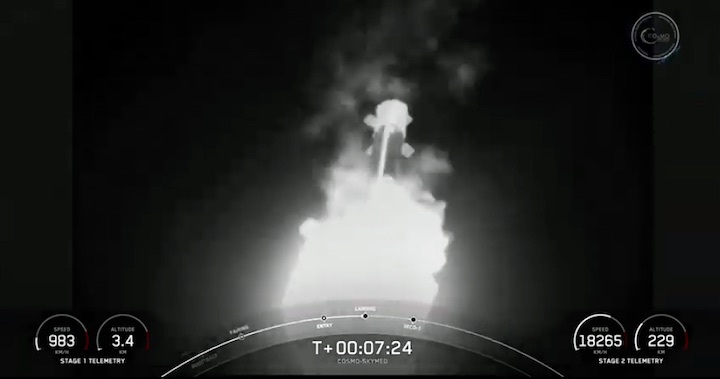
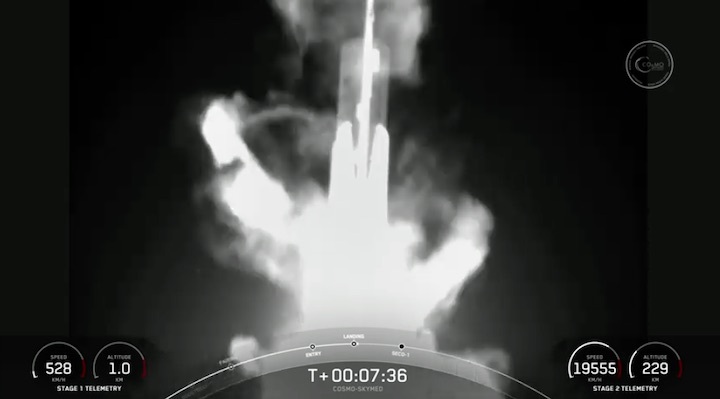
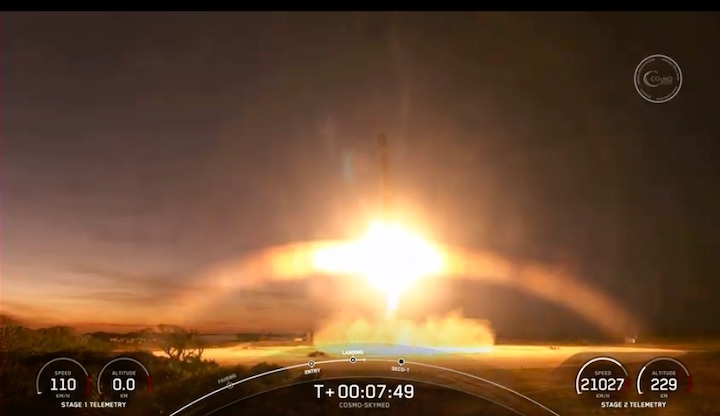
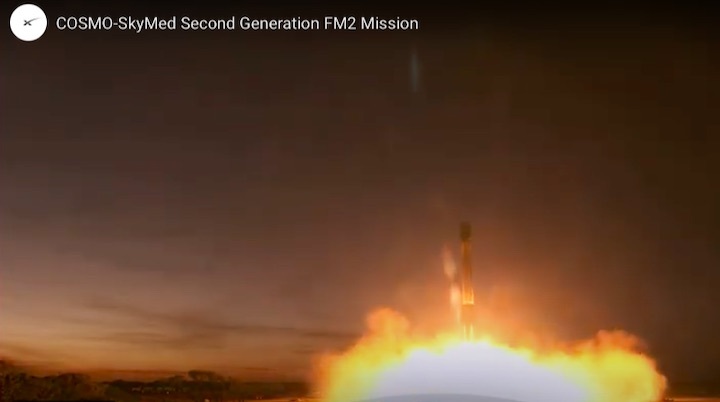
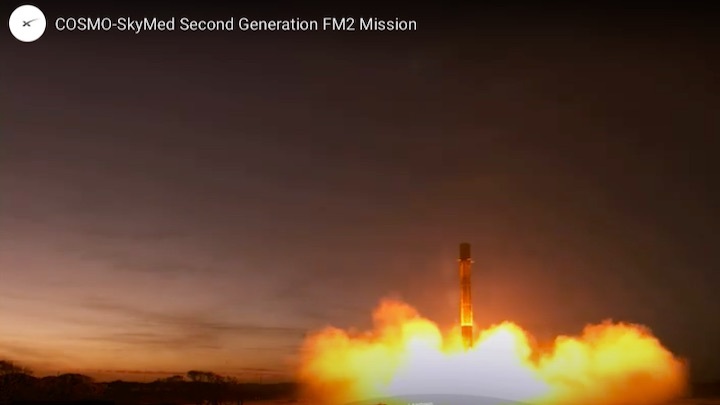
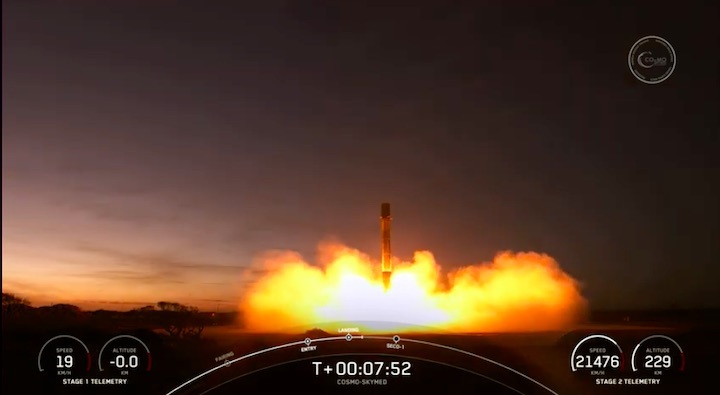
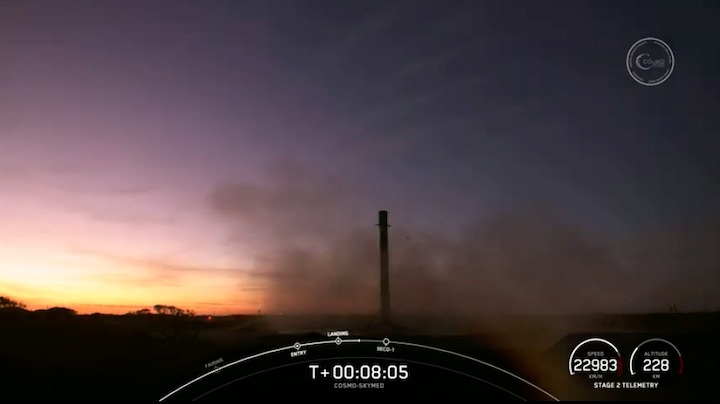
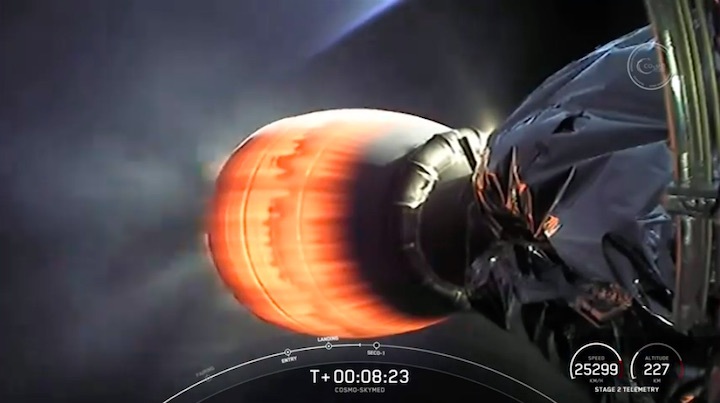
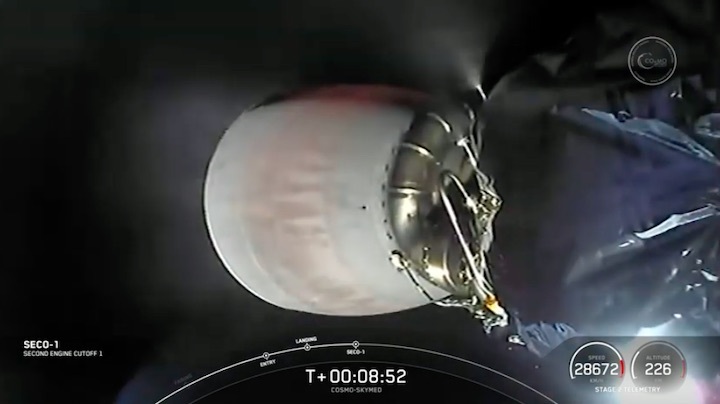
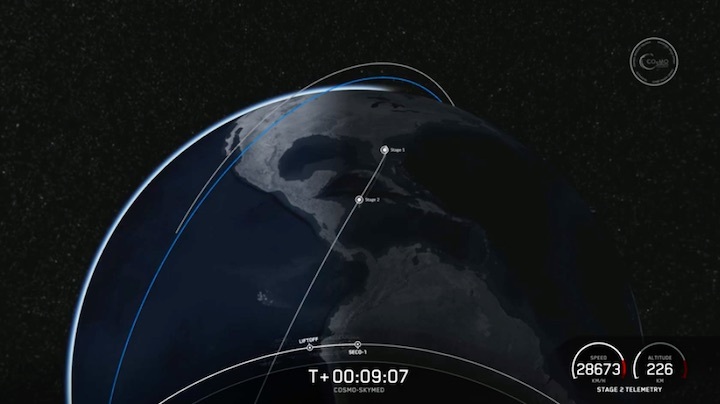
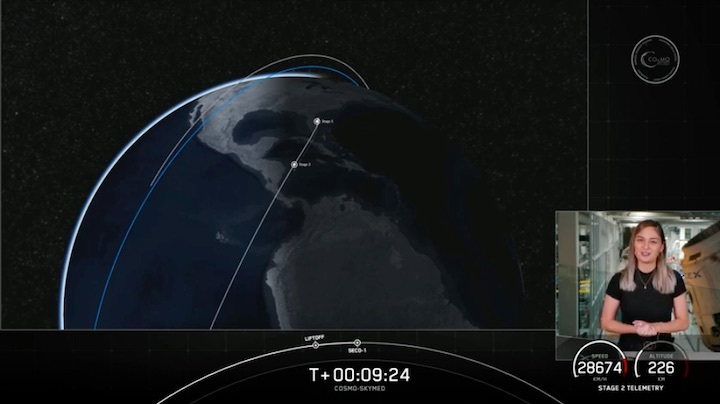
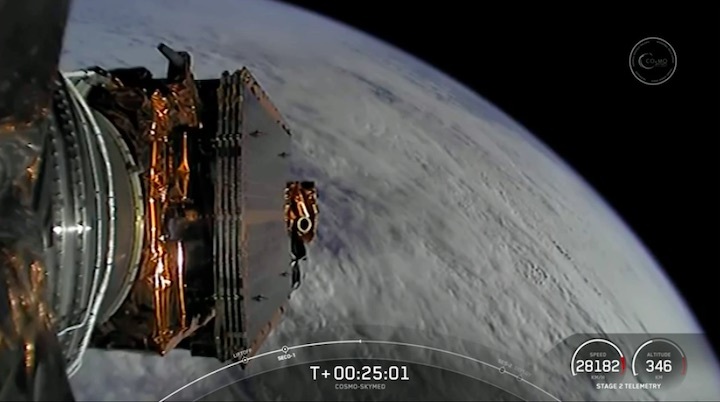
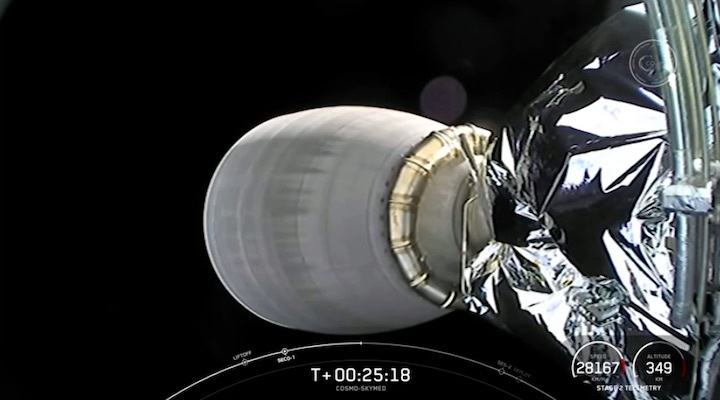
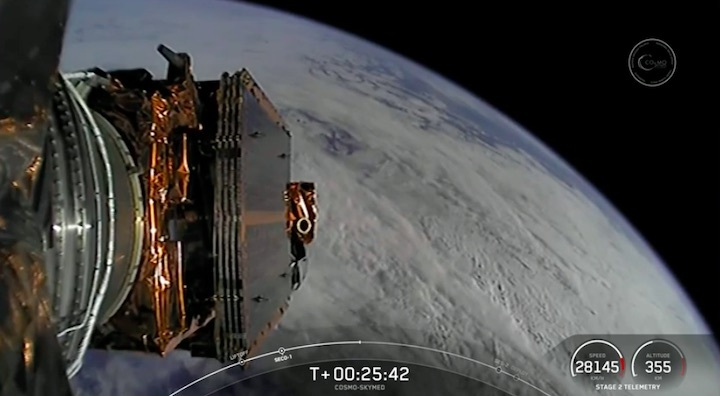
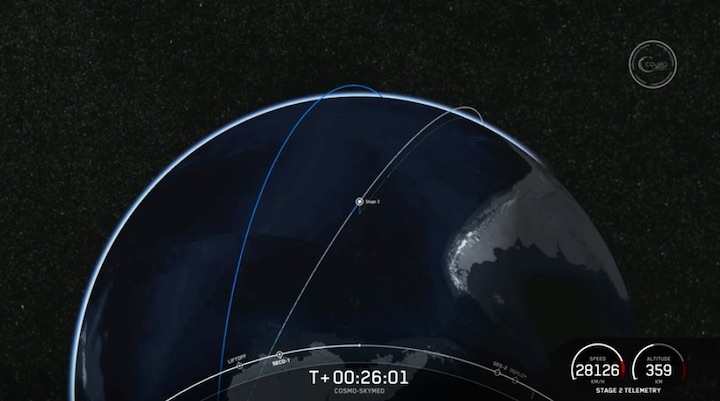
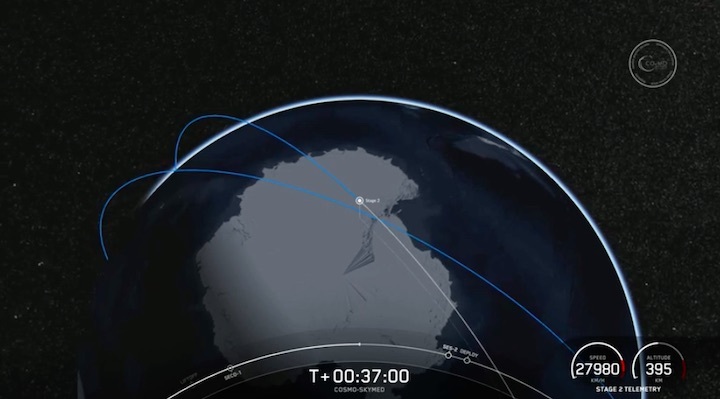
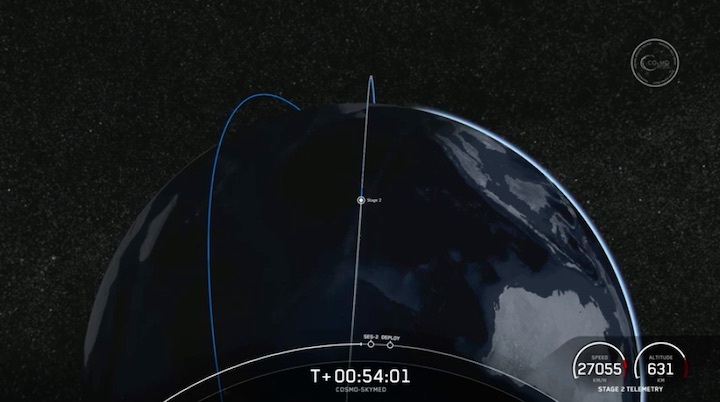
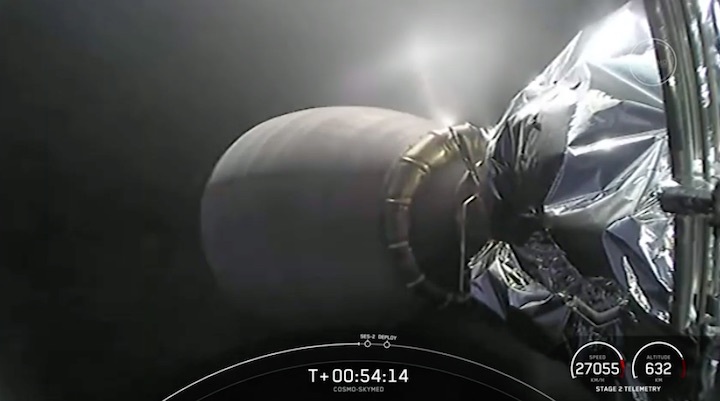
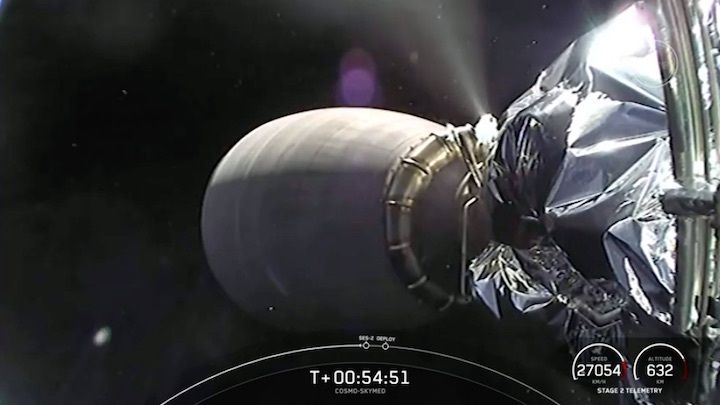
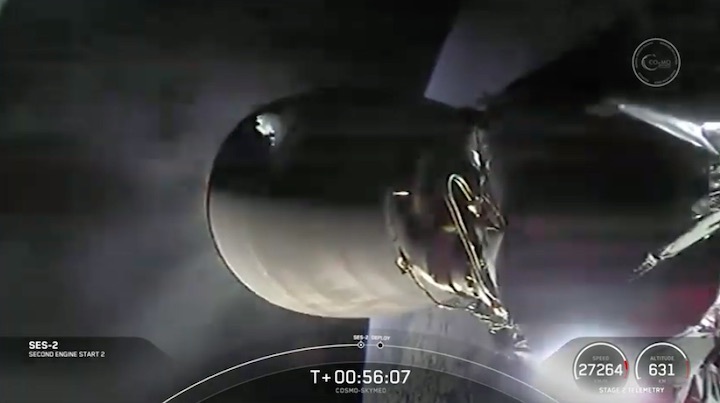
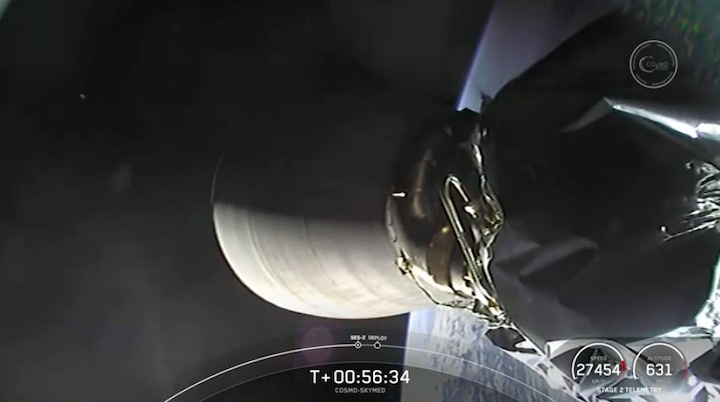
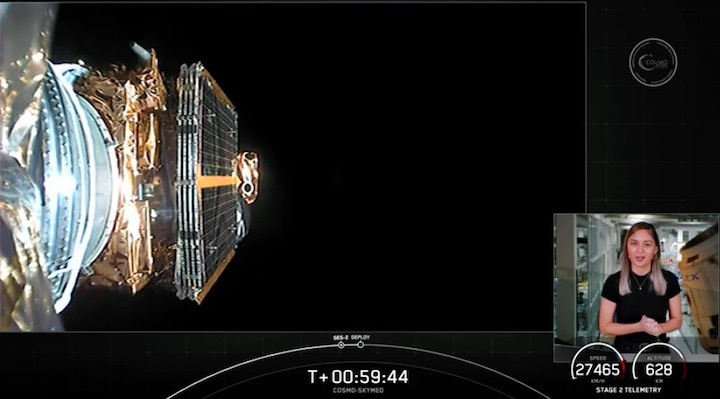
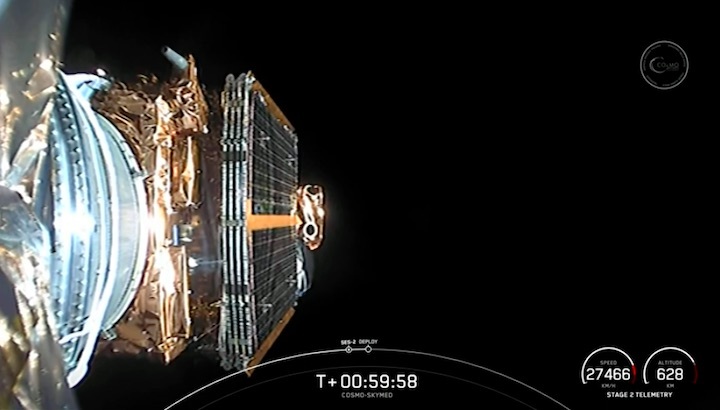
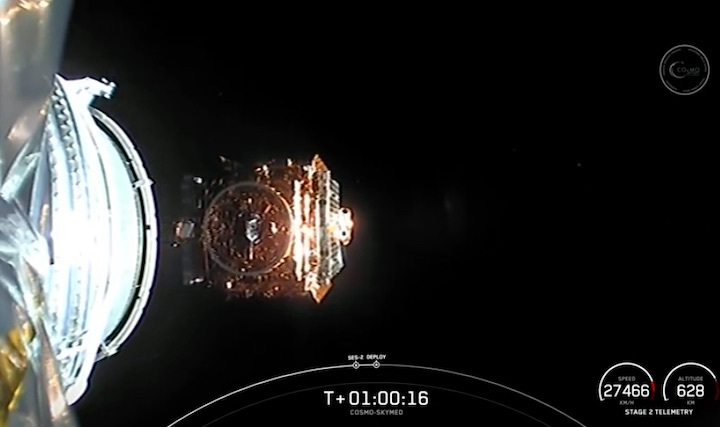
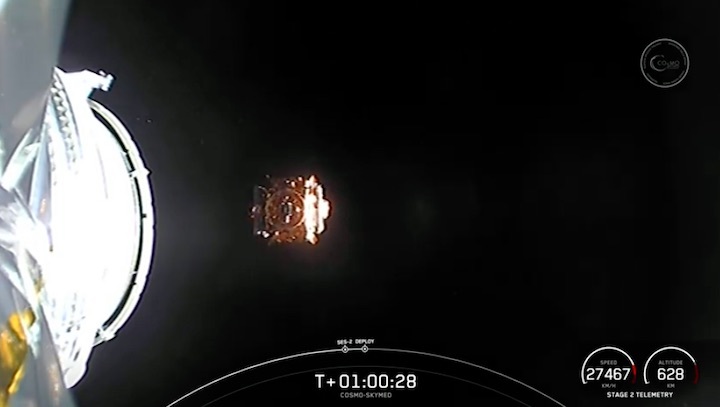
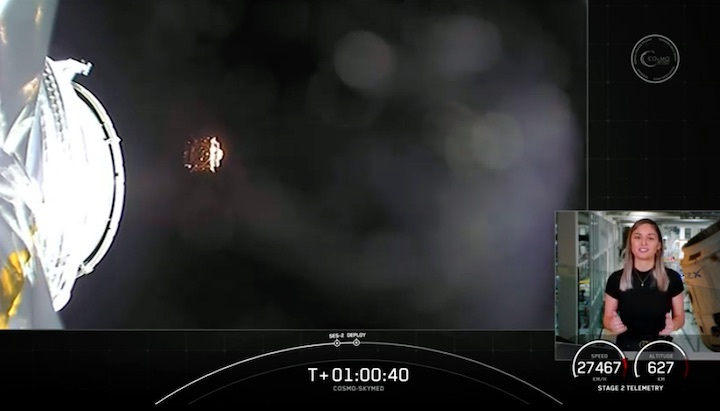
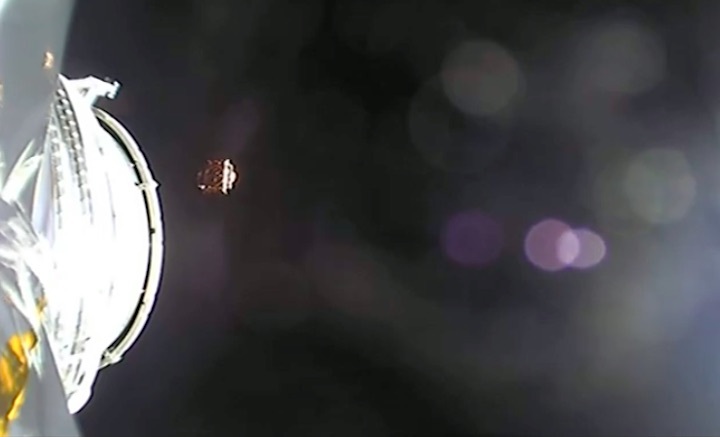
Quelle: SpaceX

